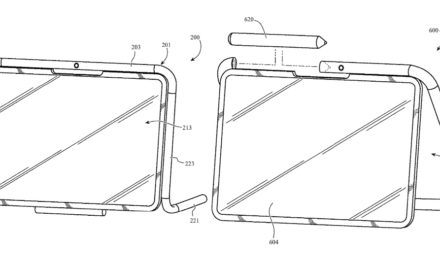By Greg Mills
I live in Kansas City, Kansas. I pay US$49.90 a month to Time Warner Cable for “Road Runner Turbo” Internet service. We had download speed this morning of 26.45 Mbps and an upload speed of .94 Mbps and a ping in 42ms. My iPad came in at 6.24 Mb/s download and .56Mb/s upload. Lithuania has an average speed three times what I do now. Just wait, Lithuania.
Our connection speeds vary, but while not super fast, we get by. Our Internet service comes in by cable modem. There is a coaxial cable that runs from the street overhead to the house and threads through the walls to a cabinet in the master bedroom. A little black box has blinking lights and a number of ethernet out ports.
I have an Apple Wi-Fi device hooked up as well as an Earthlink phone box. We get passable speeds for Wi-Fi to a MacBook Pro, an iMac, an iPad and various iPhones. My daughter downloads movies a lot through NetFlix on her iPhone. We are a sort of typical Apple family.
All of that is about to change for the better, dramatically they say, due to the small g in the cloud, that is Google. A while back Google announced that they would fund a state-of-the-art fiber optic Internet installation in some American city. Over 1,100 cities applied and jumped through hoops to be the one … one town even changed their name to “Google” to impress them.
Lightning struck and Kansas City, Kansas was chosen. While I have serious issues with Obama, the push to get broadband everywhere in the country is wise. The interstate freeway system is an example of something cutting edge in the day it was proposed, that is taken for granted today and helped develop our country dramatically.
Remember dial-up days when “www” was interpreted as “world wide wait”? Then came 56k modems and downloading things was faster but not snappy. Then various speed improvements came along and now broadband is more common.
To understand the importance of “bandwidth,” try running around the house breathing through a straw. All those data packets need to get through the little wire to where they are going. Broadband is like a bigger pipe. The fiber optic network Google is putting in will be like a giant culvert instead of a garden hose to supply an incredible amount of bandwidth to everyone hooked up to it.
Sometimes I am critical of Google for overreaching and pushing their concepts, “damn the torpedos full speed ahead.” The interpretation of the mantra of Google, “do no evil,” is sort of dependent upon your definition of evil. The invasion of privacy isn’t evil until it is your privacy that was violated. Copyrights are for other people until Google publishes your book on the Internet. Google seems to enforce the idea that all digital content should be free to the user, so they can sell more advertising. Well, make money they do. In wheel barrow loads.
Along with all that money has come a sort of generous series of donations to support cutting edge computer and software development that, among other things, will enhance the worldwide adoption of the Internet and, thus, Google at the end of it all. Not looking a gift horse in the mouth (too closely) I am looking forward to sizzling Internet connections that must be sold to Kansas City, Kansas citizens for about what broadband is sold for today. Part of the experiment is to provide super fast broadband to everyone at affordable prices. There is likely to be tiered service levels but still, speeds will dramatically improve for everyone.
Fiber optic materials conduct data much faster than wires do. Also, you can put a whole lot more data through an optical fiber than through a wire. A big part of this super fast system will be a major improvement in the Internet backbone coming to Kansas City. Being close to a major backbone on the Internet is very attractive to heavy users of the Internet for downloading and uploading digital data of all kinds. Fiber optic is the wave of the future for communications devices and installed networks.
Thus, I expect a major influx of high tech companies coming to town. This bodes well for local real estate values, business and the city tax rolls. Our Jr. College will get free fiber optic Internet, as will a number of other schools and institutions. Connecting at speeds that are so fast there appears to be no waiting time will be amazing to behold. Who knows what innovative developments will result when super fast Internet is a given part of the infrastructure here?
How much speed can my current computers handle? The “Lightning Bolt” port coming soon to all new Macs may be required to fully use that speed. This is a new question for me to research. The slowest element of your connection or computer is the upper limit for speed. Lighting Bolt is really designed for fiber optic connection but will also work with wires for the immediate future.
Right now, I suspect the top speed of our Apple Internet router will be the limiting factor. While 300 Mbps is the technical upper limit of my AirPort router using the 802.11n protocol, the Fiber Optic system coming in will support up to 1000 Mbps or 1Gbps, also known as “Gigabit” Internet. If I have done the math right, that is about 100 times faster than I have ever tested our connection and over three times the high end speed for our router.
Perhaps Apple will build a data center here. More on this as it all sinks in and I get more information.
That’s Greg’s Bite for today.
(Greg Mills is currently a graphic and Faux Wall Artist in Kansas City. Formerly a new product R&D man for the paint sundry market, he holds 11 US patents. Greg is an Extra Class Ham Radio Operator, AB6SF, iOS developer and web site designer. He’s also working on a solar energy startup using a patent pending process for turning waste dual pane glass window units into thermal solar panels used to heat water see: www.CottageIndustySolar.com Married, with one daughter, Greg writes for intellectual property web sites and on Mac/Tech related issues. See Greg’s art web site at http://www.gregmills.info He can be emailed at gregmills@mac.com)




